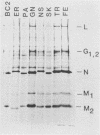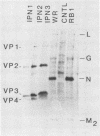Abstract
The virion protein patterns of 71 isolates of infectious hematopoietic necrosis virus (IHNV) from the Pacific Northwest were analyzed by sodium dodecyl sulfate-polyacrylamide gel electrophoresis of [35S]-methionine-labeled virus. This analysis led to the classification of these virus isolates into four or more types. Type 1 virus was characterized by a nucleocapsid protein with an approximate molecular weight of 40,500. Type 2 and type 3 viruses have nucleocapsid proteins with molecular weights of 42,800 and 43,250, respectively. Type 2 virus was responsible for the recent epizootics of IHNV among fish in the lower Columbia River. The California IHNV isolates were type 3 with the exception of some of those isolated from fish at the Coleman Hatchery on the Sacramento River. These Coleman Hatchery isolates belonged to a type 4 virus group characterized by a larger glycoprotein of approximately 70,000 molecular weight. All other viruses examined had glycoproteins of 67,000 molecular weight. The "type 5" virus isolates were grouped together because they were not sufficiently distinct to warrant classification into a separate type. These findings have been useful in determining that a particular virus type is characteristic for a geographic area and will infect many different salmonid species in that area and the same type isolated from parental fish is responsible for the subsequent outbreak of the diseases in progeny.
Full text
PDF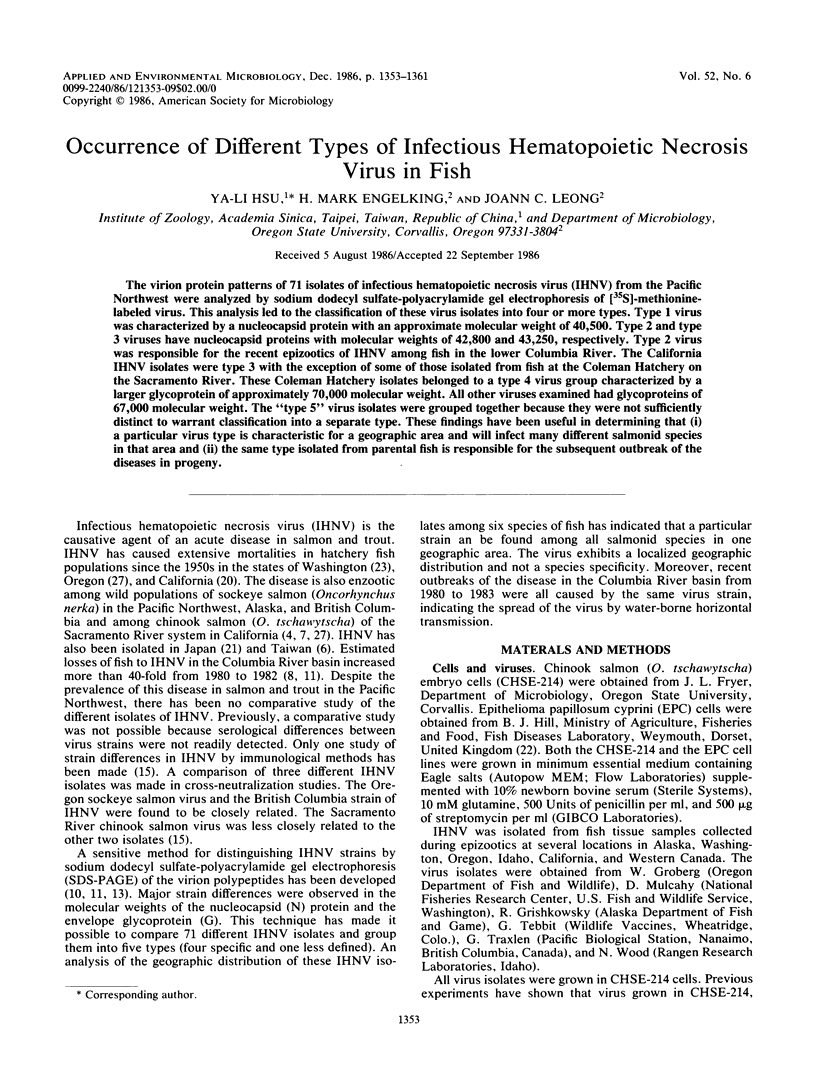
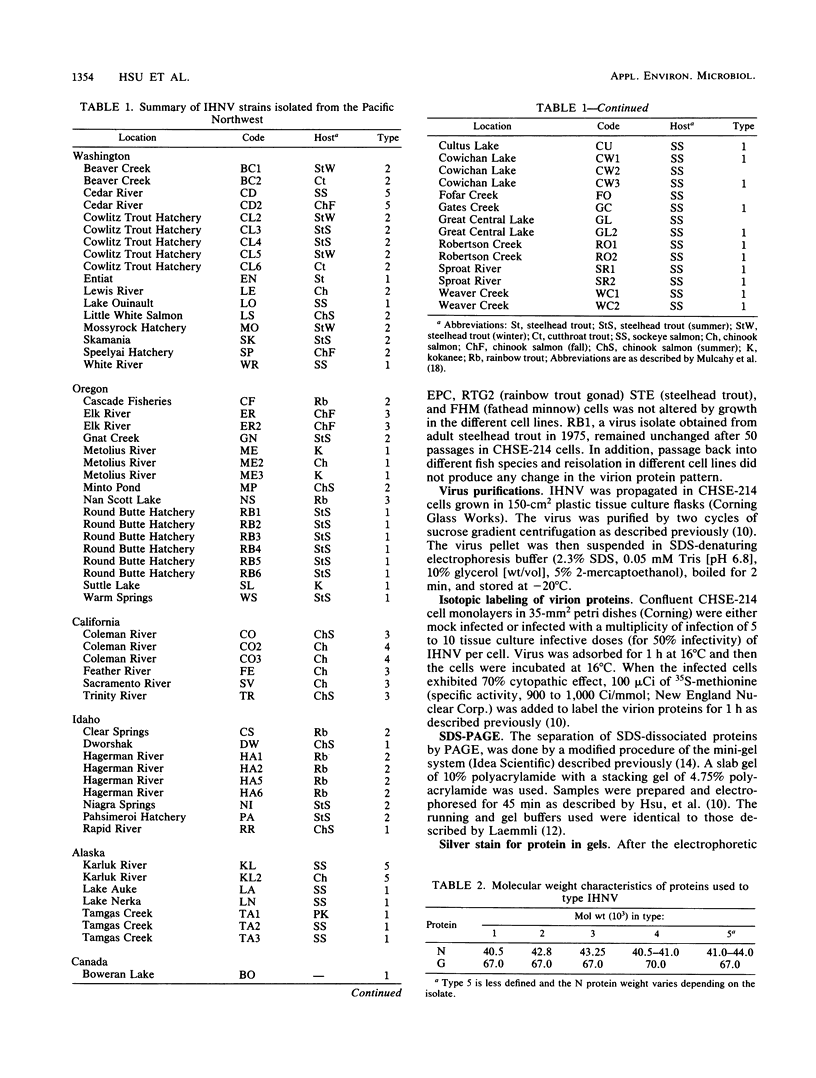
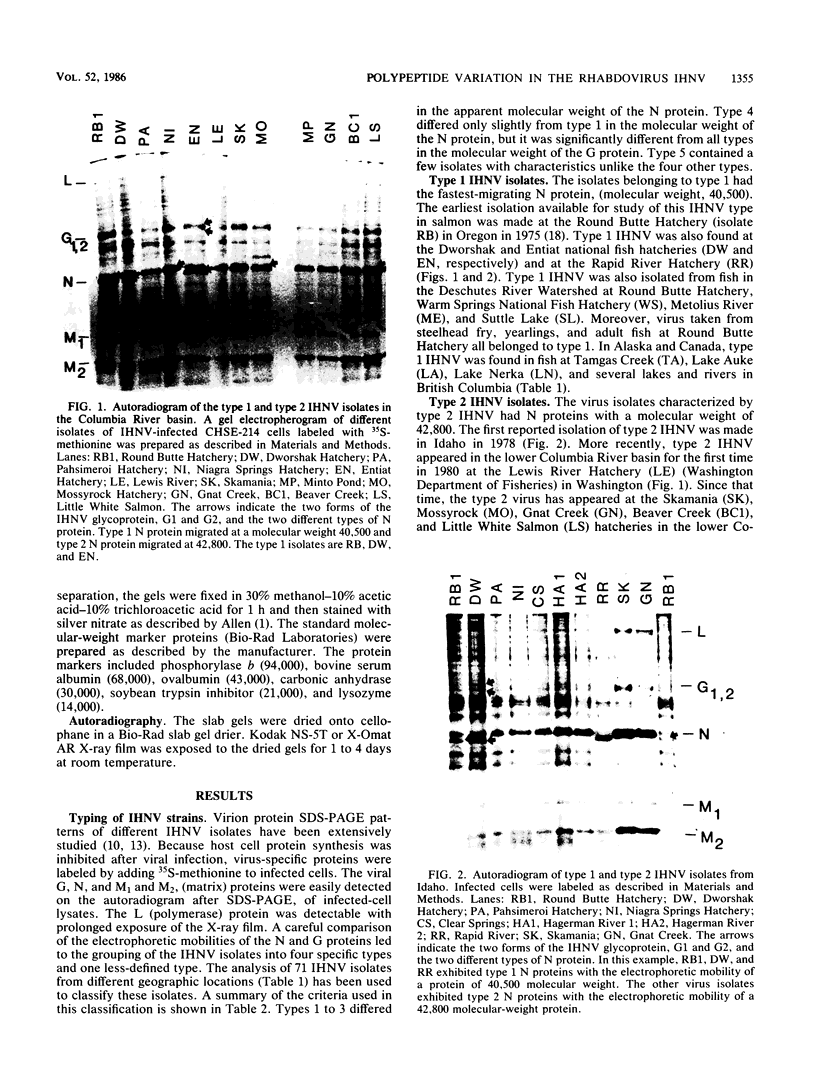
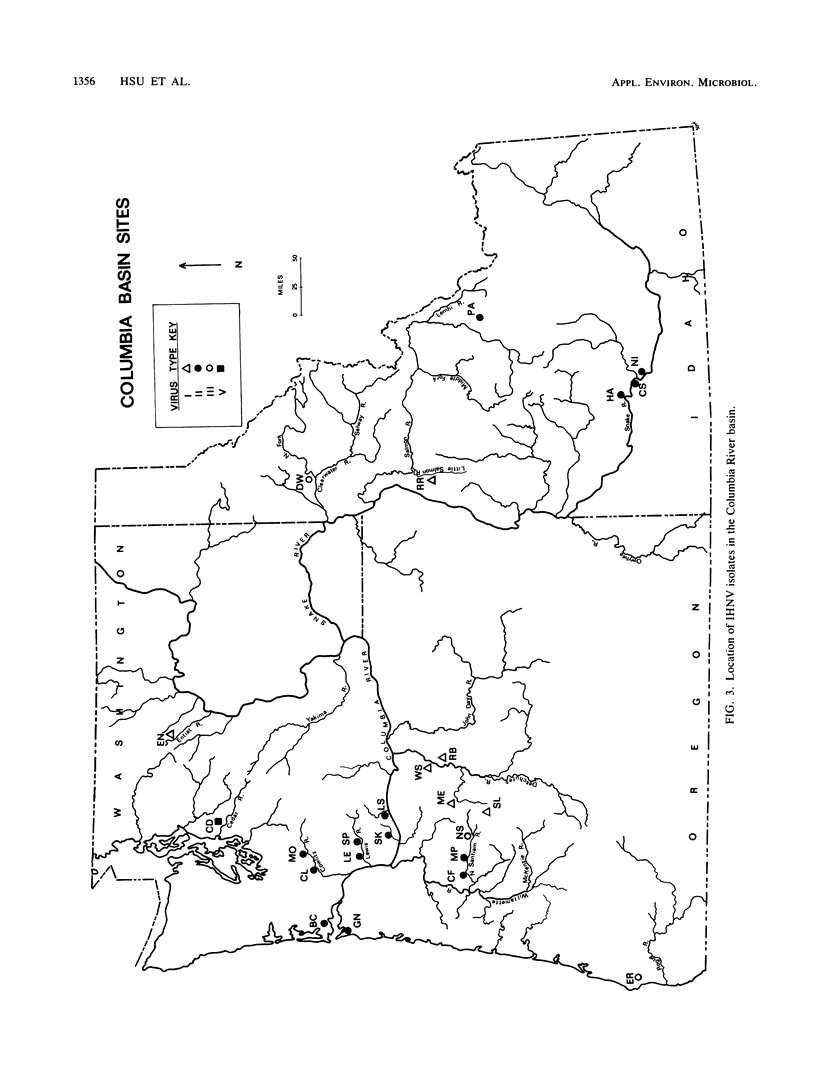
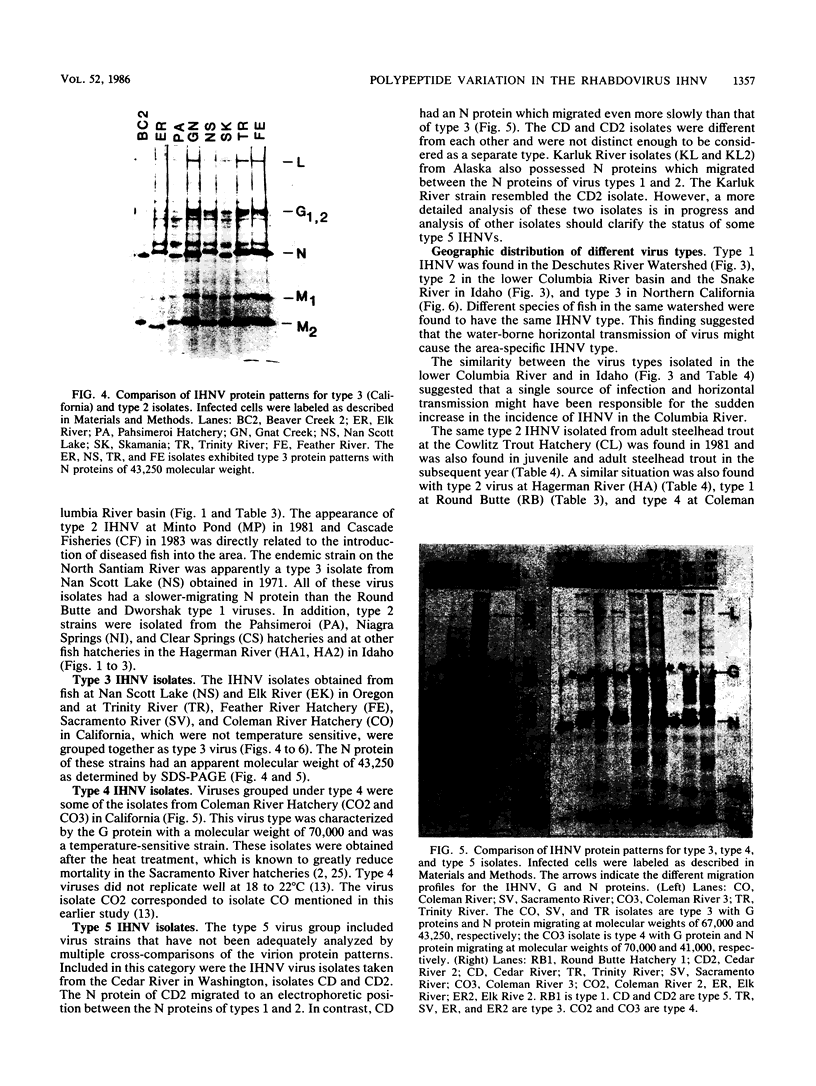
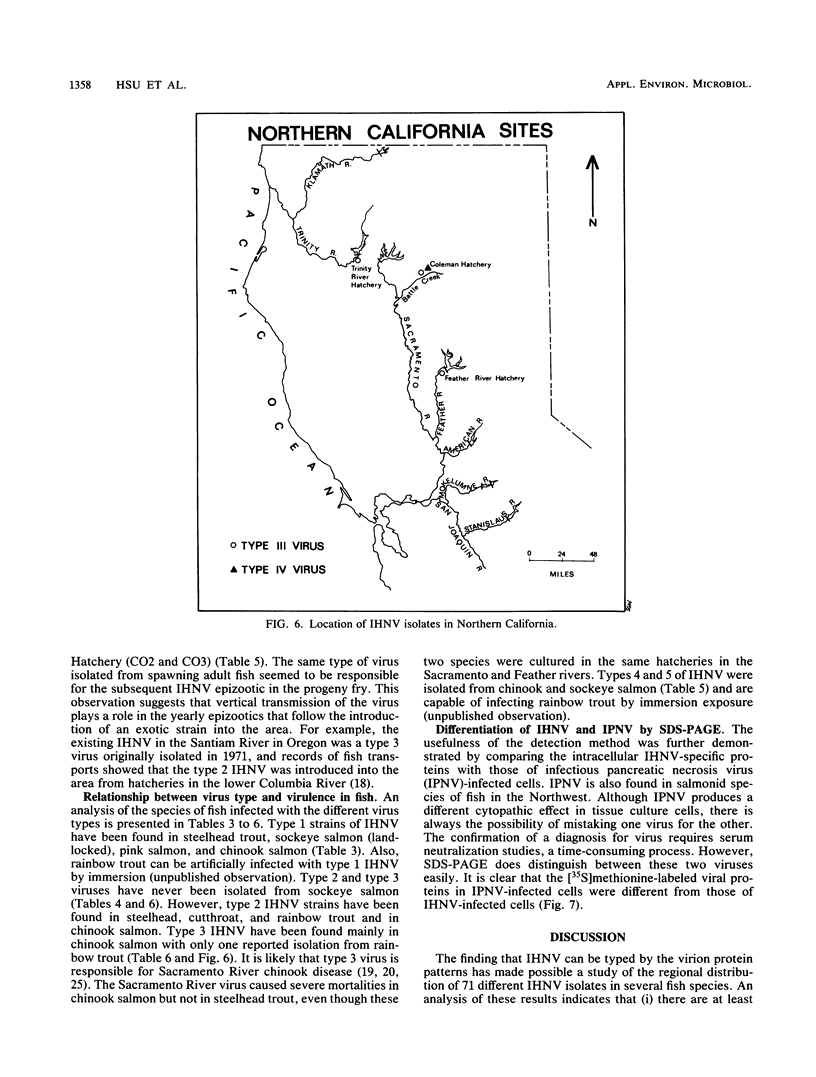
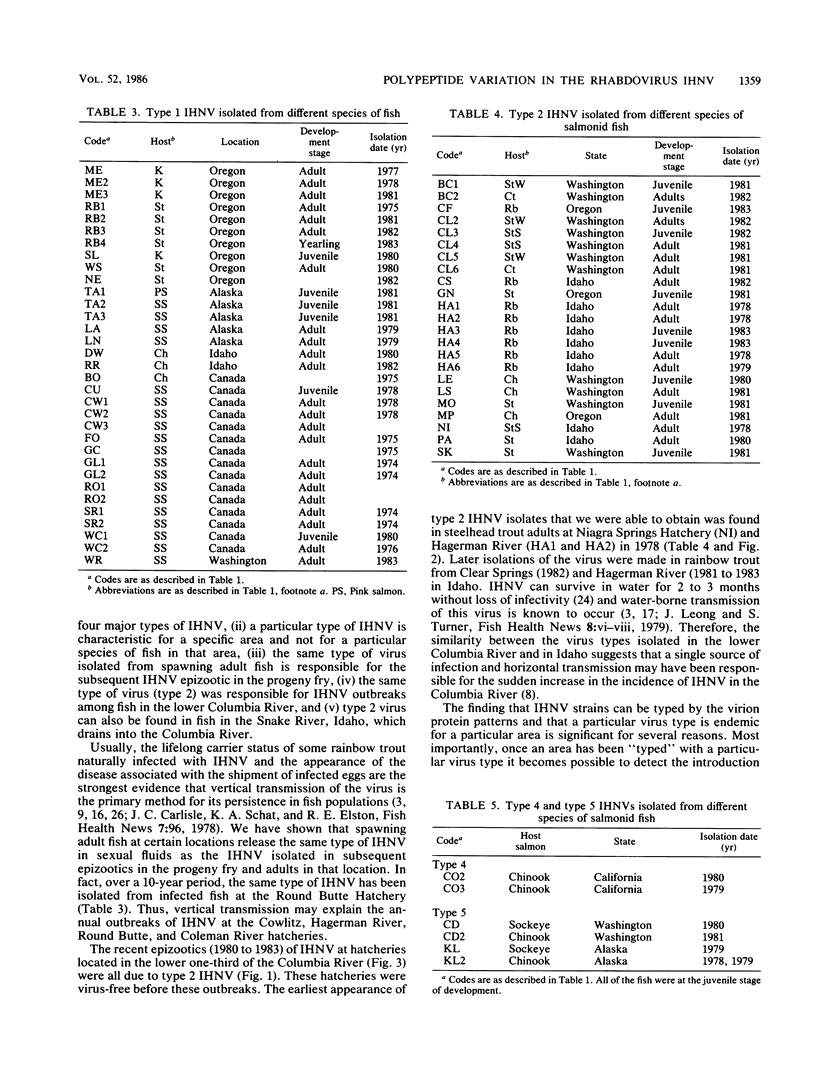
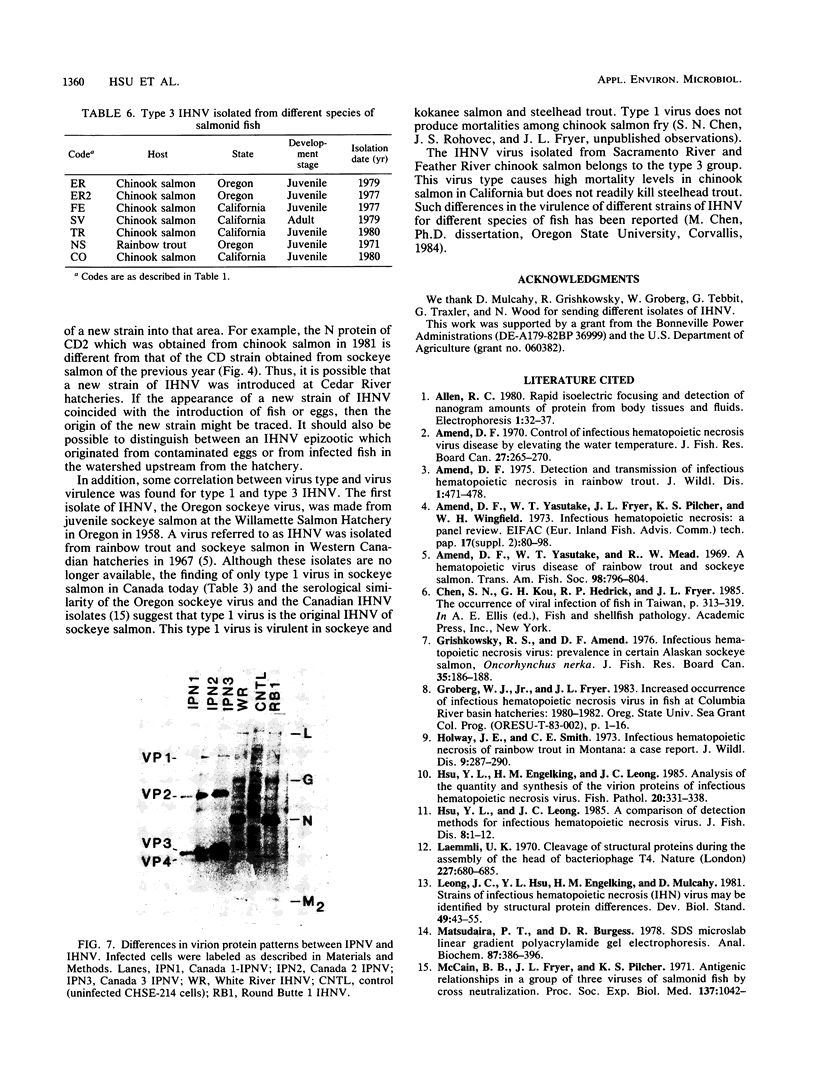
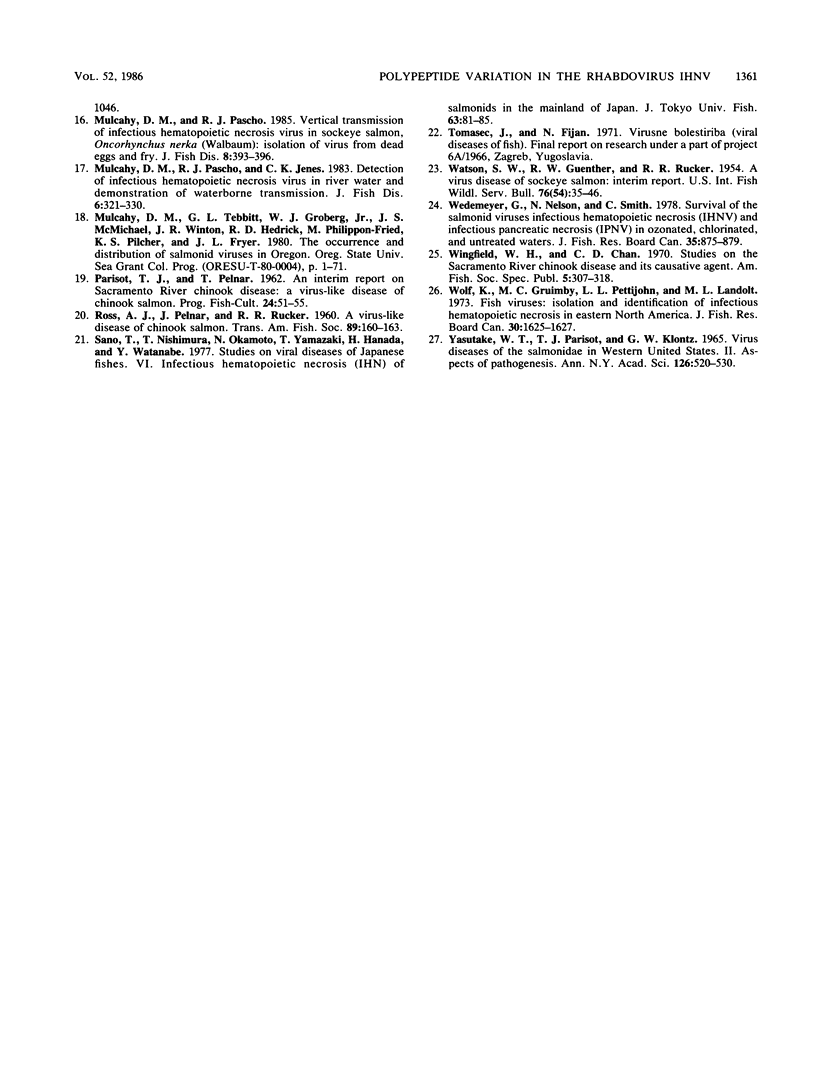
Images in this article
Selected References
These references are in PubMed. This may not be the complete list of references from this article.
- Amend D. F. Detection and transmission of infectious hematopoietic necrosis virus in rainbow trout. J Wildl Dis. 1975 Oct;11(4):471–478. doi: 10.7589/0090-3558-11.4.471. [DOI] [PubMed] [Google Scholar]
- Holway J. E., Smith C. E. Infectious hematopoietic necrosis of rainbow trout in Montana: a case report. J Wildl Dis. 1973 Oct;9(4):287–290. doi: 10.7589/0090-3558-9.4.287. [DOI] [PubMed] [Google Scholar]
- Laemmli U. K. Cleavage of structural proteins during the assembly of the head of bacteriophage T4. Nature. 1970 Aug 15;227(5259):680–685. doi: 10.1038/227680a0. [DOI] [PubMed] [Google Scholar]
- Matsudaira P. T., Burgess D. R. SDS microslab linear gradient polyacrylamide gel electrophoresis. Anal Biochem. 1978 Jul 1;87(2):386–396. doi: 10.1016/0003-2697(78)90688-7. [DOI] [PubMed] [Google Scholar]
- McCain B. B., Fryer J. L., Pilcher K. S. Antigenic relationships in a group of three viruses of salmonid fish by cross neutralization. Proc Soc Exp Biol Med. 1971 Jul;137(3):1042–1046. doi: 10.3181/00379727-137-35724. [DOI] [PubMed] [Google Scholar]
- Yasutake W. T., Parisot T. J., Klontz G. W. Virus diseases of the Salmonidae in western United States. II. Aspects of pathogenesis. Ann N Y Acad Sci. 1965 Aug 10;126(1):520–530. doi: 10.1111/j.1749-6632.1965.tb14298.x. [DOI] [PubMed] [Google Scholar]





